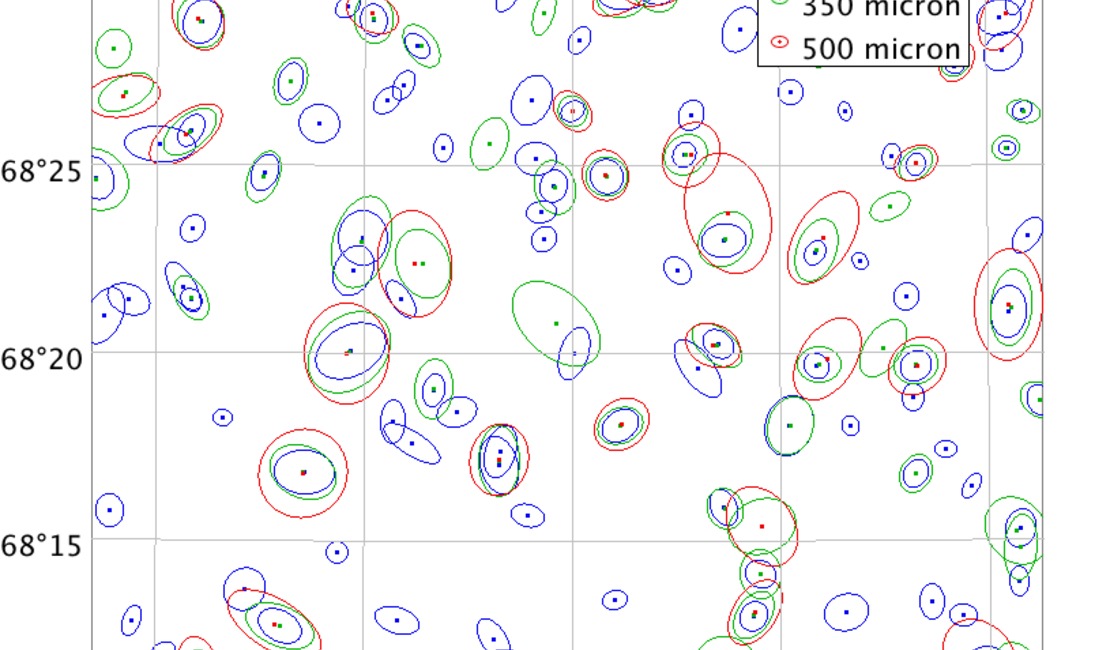
SPSC Positions and Shape Parameters
Positions and shape parameters of SPIRE Point Source Catalog (SPSC) sources in an exemplary arbitrary and largely "empty" area of the sky. The three SPIRE bands are at 250 (blue), 350 (green), and 500 (red) microns, respectively. Good positional correspondence of brighter point sources, as well as source multiplicity due to confusion at low flux levels, can be seen.
SPIRE mapped about 9% of the sky in submillimeter broad-band filters centered at wavelengths of 250, 350, and 500 microns (1199, 857, and 600 GHz, respectively), with spatial resolutions of 17.9", 24.2" and 35.4, respectively. The SPSC was extracted from a total of 6878 Herschel observations, consisting of a serendipitous mix of program science observations with sky coverage to varying depths and calibration observations performed in standard configurations.
The photometry was obtained by a systematic and homogeneous source extraction procedure, followed by a rigorous quality check that emphasized reliability over completeness. Regions affected by strong Galactic emission, mostly in the Galactic Plane, were excluded, as they pushed the limits of the four source extraction methods that were used. Aimed primarily at point sources, the SPSC also contains a significant number of slightly extended sources. Due to the relatively large spatial extent of the SPIRE beams, a number of point or extended sources in the SPSC can actually be composites of multiple sources seen at shorter wavelengths. Users are encouraged to trace back catalog entries to the originally contributing detections in SPIRE observations via the cross-identification table available for download.
Image Details
- Date
- February 6, 2017
- ID
- nhsc20170206
- Type
- Chart
- Credit
- Caltech/IPAC







